
by Sandra Gulland | Jan 30, 2015 | Adventures of a Writing Life |
Remember the first photos of Earth from space? It created a sea-change in our perspective.
As a child, my father found it amusing how disturbed I was by the idea of infinity. I am challenged anew, and in a rather marvellous way, seeing this amazing NASA video.
The word “perspective” has many meanings. It is an old word, dating from 1300s.
1387: Aristotle..made..problemys of perspective [L. perspectiva problemata] and of methaphesik.
a1661 W. Brereton (1844) 60 Wm. Daviseon offered to furnish me with a couple of these perspectives, which shew the new-found motion of the stars about Jupiter.
1692 tr. C. de Saint-Évremond 280 By the means of great Perspectives, which Invention becomes more perfect every Day, they discover new Planets.
1605 Bacon ii. sig. Hh3, We haue endeauoured in these our Partitions to observe a kind of perspectiue, that one part may cast light vpon another.
It’s this last, the sense of “putting things in perspective,” that this NASA video vividly evokes for me. What do our own small lives matter, after all?
I am consoled by William Blake’s lines from Auguries of Innocence:
To see a World in a Grain of Sand
And a Heaven in a Wild Flower,
Hold Infinity in the palm of your hand
And Eternity in an hour.
I begin each day working to create a world on the page. Every age has its moment of wonder, of awe, of expanded perspective. I’m wondering what that moment was for Hortense at the end of the 18th century.
Worth reading …
The Incident of the Fly Swatter, a blog post on Wonders & Marvels, on some historical perspective on the relationship between France and the Muslim world.
by Sandra Gulland | Nov 21, 2014 | Baroque Explorations |

It’s simply astonishing what one can now find on-line. In the way of any wander through library stacks, I came upon this title on Gallica.bnf.fr, the French national library on-line:
Tableau historique, littéraire et politique de l’an VI de la Républic française.
Of course it was not at all what I was looking for, but although “You can’t always get what you want, but if you try sometime, you find you get what you need.” :-)
I love the way the digital book opens with its cover:

And then turns to the marbled end-paper:

Here’s a crop of the title page:
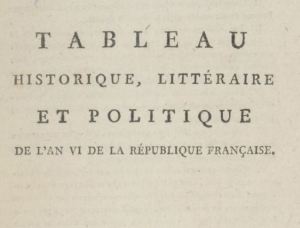
(You can almost feel the rich texture of the paper.)
And then, the first chapter division:
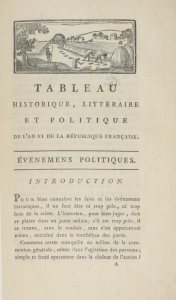
What caught my attention “leafing” through this book was the section on legislation, a daily account of laws passed in the years 1798-1799.
They are very detailed: they needed to be. The French government was (once again) creating a government from scratch. Laws mentioned cover passport regulations, import duties, the re-establishment of a national lottery, the legislateurs’ own schedule (they will no longer meet on décadis (the end of the 10-day week), patents, manufacture of goods, the “uniform” to be worn by the members of the legislature …
“…habit français, couleur bleu national, croisé et dépassant le genou. Ceinture de soie tricolore, avec des franges d’or. Manteau écarlate à la grecque, orné de broderie en laine. Bonnet de velours, portant une aigrette tricolore.” – page 142
Alas, I am unable to find an illustration of this costume. No doubt they were somewhat more circumspect than those from 1796. Below left, Executive Director from 1796, compared to Napoleon’s uniform of choice as First Consul on the right:
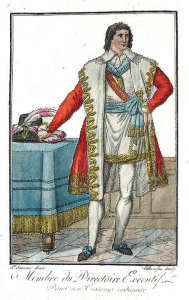

The legal record is many pages long, but I’ll note a few:
One law passed condemns to death those who rob by force or violence. This is significant because violent crime had become rampant.
Marriages (which must be civil) could only be held on décadis.
One significant law, passed 12 Nivose, an VIII (January 1, 1799), declares that Blacks born in Africa or in foreign colonies, and transferred to French islands, were free as soon as they step foot on French soil. The Revolutionary government had several years before outlawed slavery in France, but I don’t believe that it had gone so far as to declare it illegal in its colonies. (I should note that Napoleon will eventually reinstate slavery in the French colonies, and no: it was not Josephine’s doing.)
It’s delightful how worthwhile procrastinating can be. I found an excellent Revolutionary calendar (more on that later), learned the date when there was an eclipse of the moon, what the new national fêtes were to be, and much, much more.
by Sandra Gulland | Nov 3, 2014 | Adventures of a Writing Life |
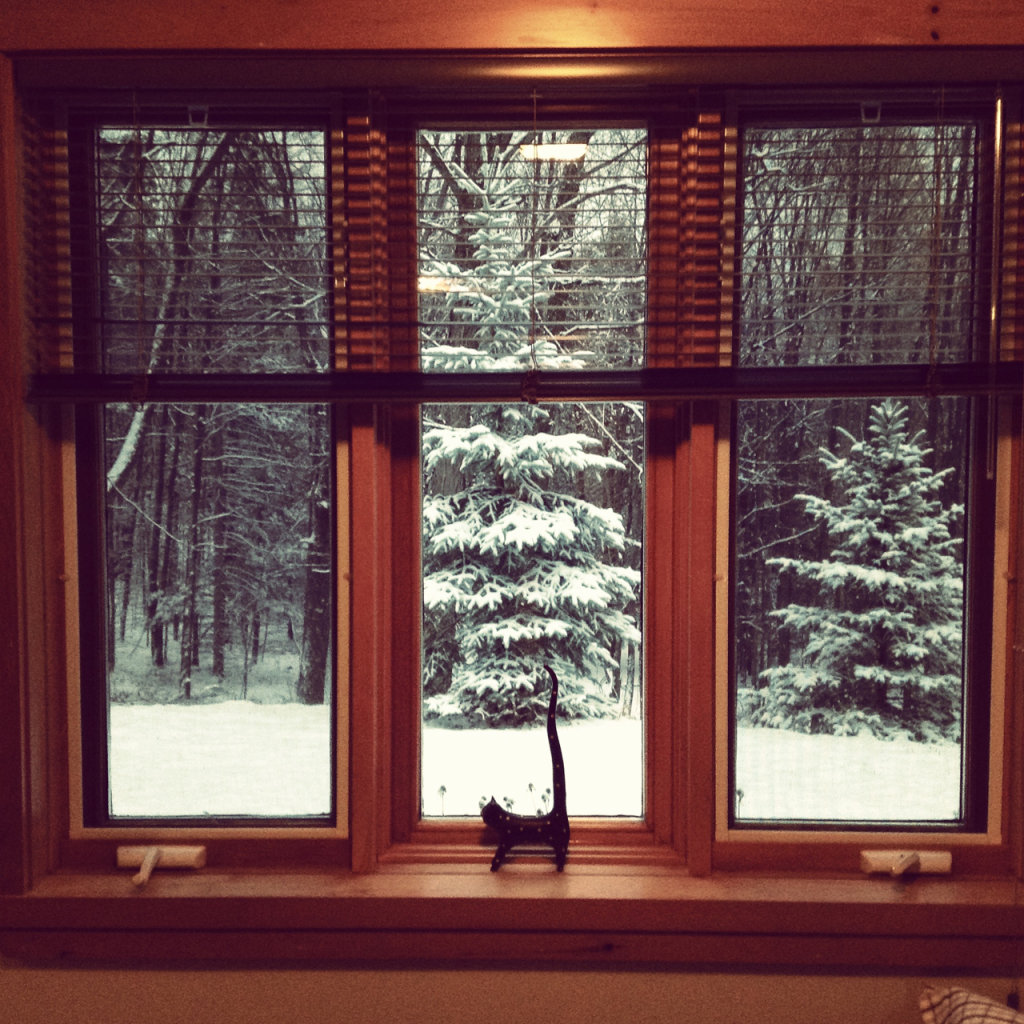
Today is our day to pack up, for tomorrow we leave first thing, heading to Toronto. On Thursday late afternoon, we’ll be driving into beautiful San Miguel de Allende, Mexico.
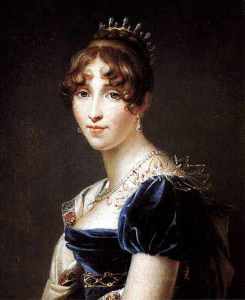
I’m always delighted to arrive in San Miguel, but I’m also always sad to head south—sad to leave my library of research books, my lovely office (“the bunker”) overlooking fields and forest. It’s a difficult process. In the next 6 months I’m going to be finishing The Game of Hope as well as beginning the next Young Adult about Hortense (tentatively titled The Princess Problem). What will I need? It’s so hard to know.
Today I will finish going through all the piles of papers and books I’ve stacked up, decide what must come, what can stay, and what should be scanned into Evernote. The life of a Historical Novelist Snow Bird is made much easier with computers and the Net (there is so much more on-line now), but there is still a surprising amount I must take with me.
And … !
Today is my 70th birthday! My party was two days ago; it was wonderful and I feel splendidly fêted. It had a 60s theme (because I was in my final days of being a 60-something), the costumes were fantastic and the playlist I put together—with the help of this site—kept us rocking ‘n rolling all night. Old folks grooving!
Most special, our son Chet made a surprise visit from New York!

Frankly, I was a bit depressed for a time about the approach of this shocking milestone (What?! Me, elderly?!), but now I feel that there is something quite energizing about turning 70. One realizes that it’s time to begin to focus on what’s important. I feel it will be my most creative decade.
Bring it on!
by Sandra Gulland | Oct 18, 2014 | Baroque Explorations |
I have been falling victim to research excitement. On one search, I came upon these letters, which did not answer my questions, but were too exciting to pass by.
All of the letters are part of an auction of letters and manuscripts. The first two were dictated by Napoleon to Géraud Christophe Duroc, displaying Duroc’s lovely handwriting. Since he is a significant character in the Young Adult novels I am writing, seeing his graceful, elegant handwriting speaks volumes.
This first one was written on November 13, 1796, in Verona. (See here for details.)
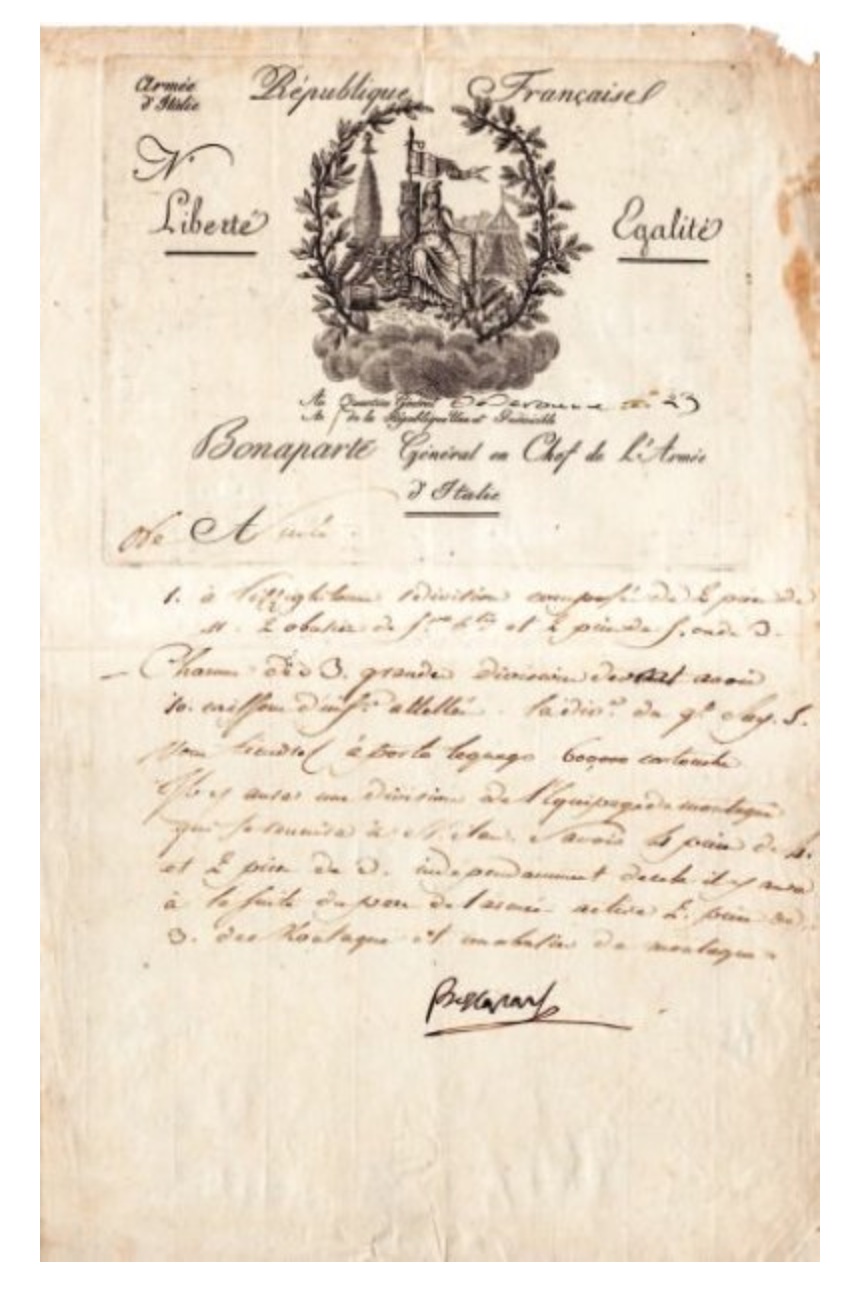
This second letter, also dictated by Napoleon and written by Duroc, was sent on September 30, 1797, from Passeriano, Italy, during the peace negotiations with Austria.
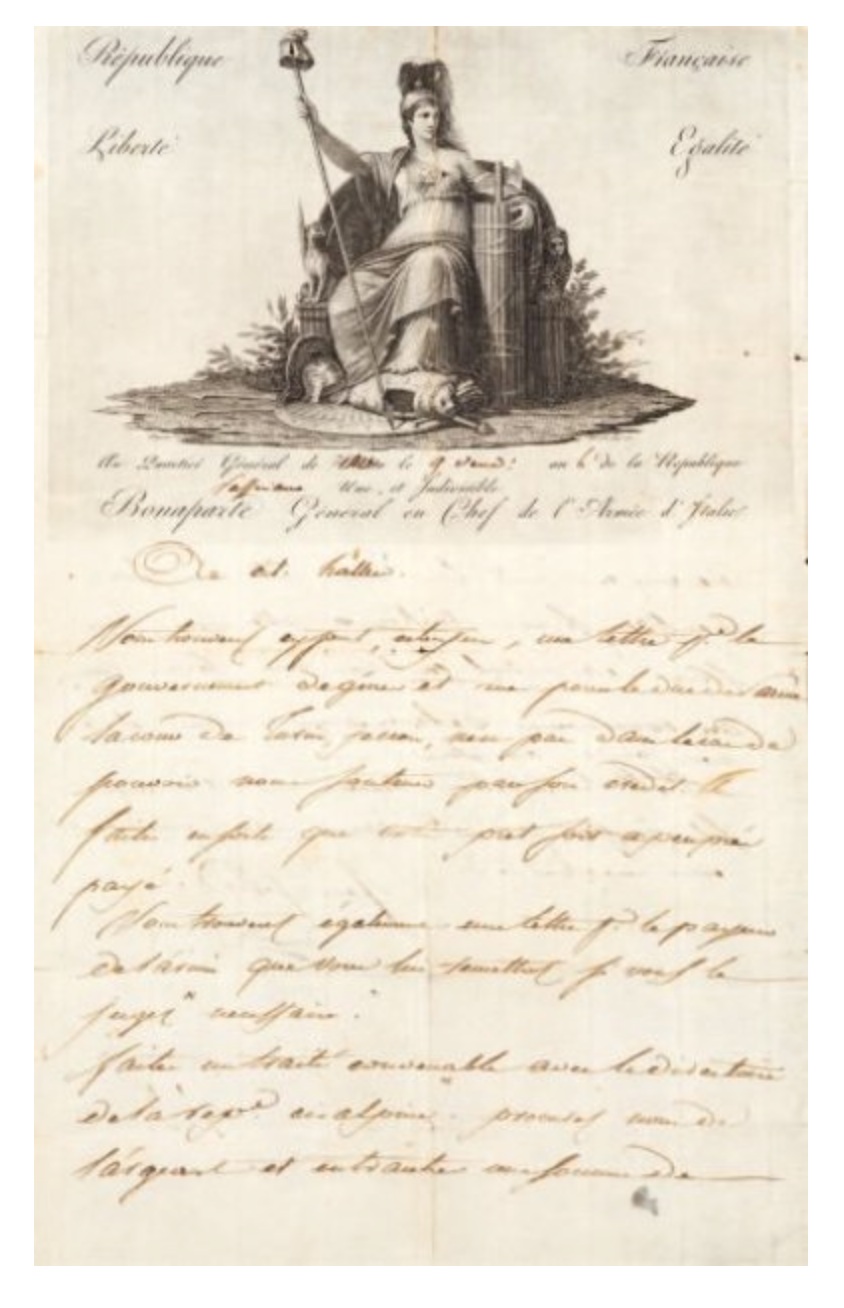
This next letter was written by Napoleon to his brother Joseph in October of 1792 from Ajaccio, Corsica, and it helps understand why Napoleon had need of a secretary. Napoleon’s handwriting was famously difficult to read.
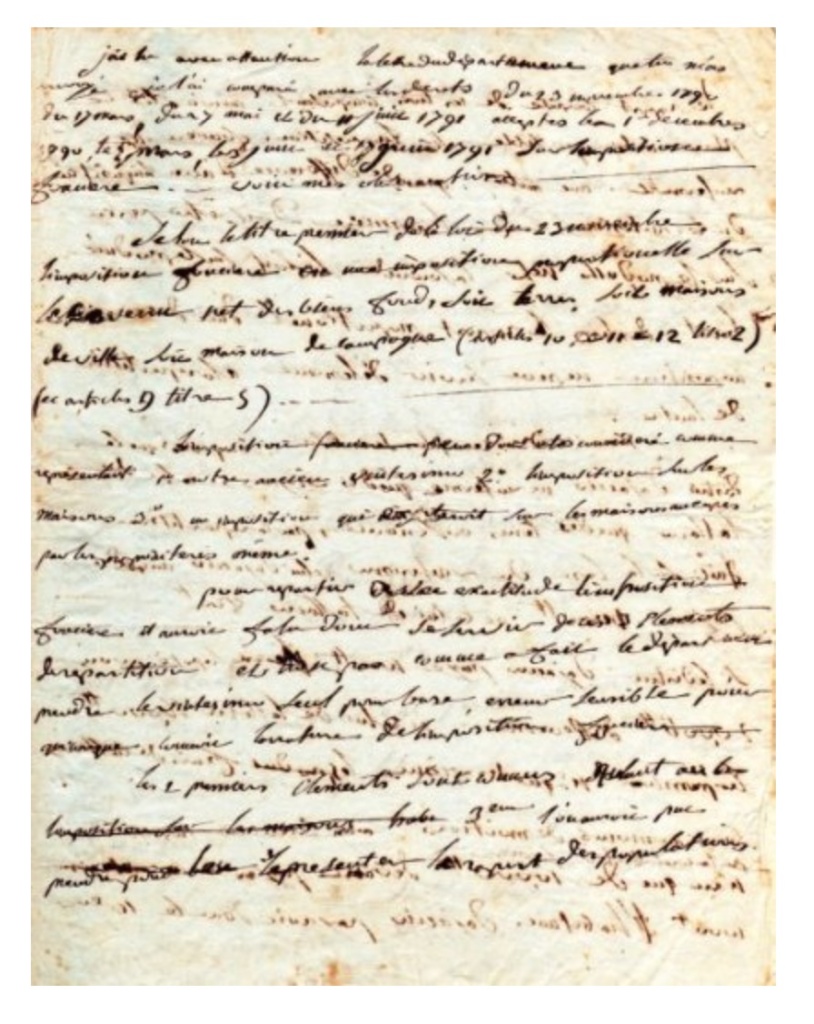
This last one was written by Josephine on May 14, 1809, to her son Eugène.
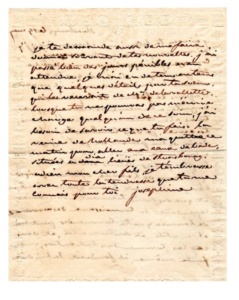
It simply thrills me to see her signature.
by Sandra Gulland | Oct 18, 2014 | Baroque Explorations |
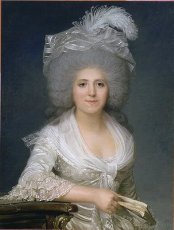
It continues to amaze me what one can find on-line now. I was searching for pre-1805 publications that contained the name Madame Campan, the founder and director of the highly esteemed boarding school Josephine’s daughter, Hortense de Beauharnais, went to.*
I was charmed to find Madame Campan’s name listed in this title:

At the beginning of the Mémoires is thank you note to the subscribers, a very long list which includes many members of the Court (including the King and Queen). I gather that all these people paid in advance in order for the Mémoires to be published. This reminded me immediately of our on-line crowdsourcing like Kickstarter.
Plus ça change, plus c’est la même chose.
*I was on-line trying to find out the name of the school as it had been referred to at the time. Here are two possibilities:
L’Institut National des Jeunes Filles/National Institution for Young Women
I’ve also seen (but only in English): National Institution for the Education of Young Women.
l’Institut national de Saint-Germain/The National Institution of Saint-Germain
I have doubts about this name because during the Revolution the name of Saint-Germain-en-Laye had been changed to Montagne-Bon-Air. It was changed back 28 février 1795, but would Madame Campan have been so bold as to jump immediately on the reversal?


















